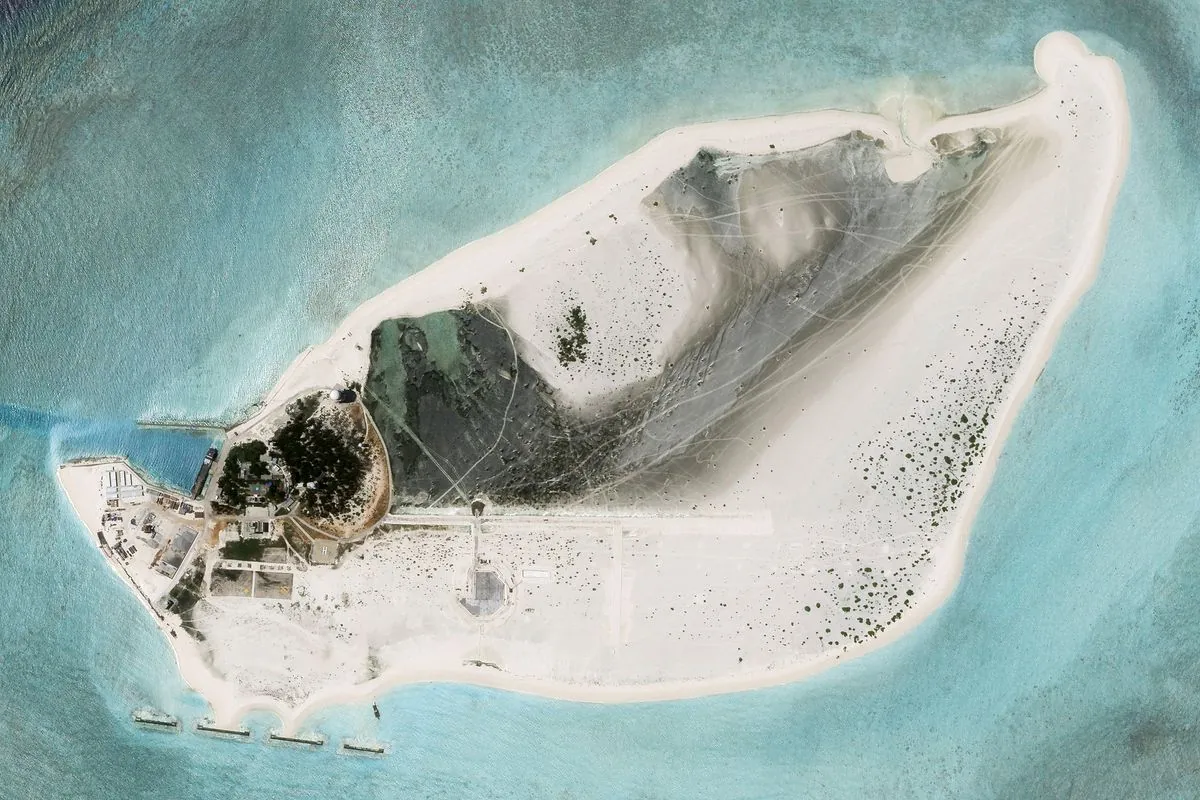The Philippines Coast Guard vessel BRP Teresa Magbanua has returned to port after a five-month standoff with Chinese vessels at the disputed Sabina Shoal in the South China Sea. The incident, which occurred in September 2024, has reignited debates about regional tensions and potential U.S. involvement in future operations.
The withdrawal of the Philippine vessel has sparked discussions about strategy and the balance of power in the region. While Philippine officials maintain that this is not a defeat, they have yet to deploy a replacement ship as promised. The situation highlights the ongoing challenges in the South China Sea, where China claims approximately 90% of the 3.5 million square kilometer area through its "nine-dash line" policy.
China's approach in the region has been described as a "cabbage strategy," involving surrounding disputed areas with multiple layers of vessels to prevent access. This tactic was evident in the recent blockade, where 40 Chinese vessels prevented Filipino resupply missions on August 26, 2024. The crew of the BRP Teresa Magbanua faced dire conditions, relying on porridge and rainwater for sustenance.
The incident draws parallels to Cold War-era "salami tactics," a term coined in the 1940s to describe gradual encroachment. This comparison raises questions about the need for decisive action to counter such strategies. The situation is further complicated by the 1951 U.S.-Philippines Mutual Defense Treaty, which could potentially involve U.S. forces in future escort missions.
Historical context is crucial in understanding the current tensions. The South China Sea disputes have a long history, with significant events including China's actions at Mischief Reef in 1996 and the Philippines' occupation of Second Thomas Shoal in 1999. The 2016 ruling by the Permanent Court of Arbitration, which China rejected, further underscores the complexity of the situation.
The region's strategic importance extends beyond territorial claims. The South China Sea contains an estimated 11 billion barrels of untapped oil, making it a valuable economic asset. Additionally, the area's significance in global trade routes adds to its geopolitical importance.
"Under the terms of a 1951 U.S.-Philippines mutual defence treaty, it would be entirely reasonable for U.S. forces to escort their Philippine allies on resupply missions."
The time factor plays a crucial role in these geopolitical confrontations. China's long-term efforts in the South China Sea, spanning over three decades, contrast with the immediate challenges faced by the Philippines and other claimant states. This dynamic extends to other global conflicts, such as the situation in Ukraine, where the sustainability of support is a key concern.
As tensions persist, the international community watches closely. The United States, as a key ally of the Philippines, faces the challenge of balancing deterrence with the risk of escalation. The upcoming U.S.-China military-to-military dialogues, following National Security Adviser Jake Sullivan's recent visit to China, may provide opportunities for de-escalation and clearer communication.
The South China Sea situation serves as a microcosm of broader geopolitical challenges. As the world navigates these complex waters, the actions taken by all parties involved will have far-reaching implications for regional stability and the global balance of power.
